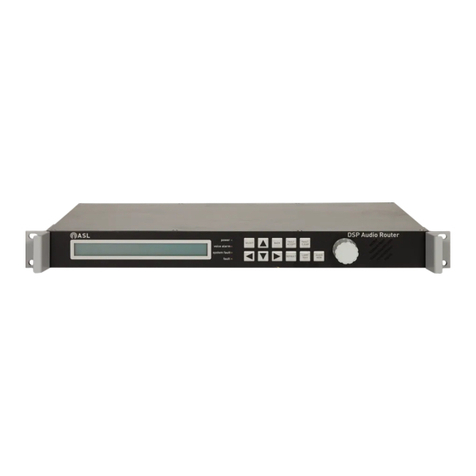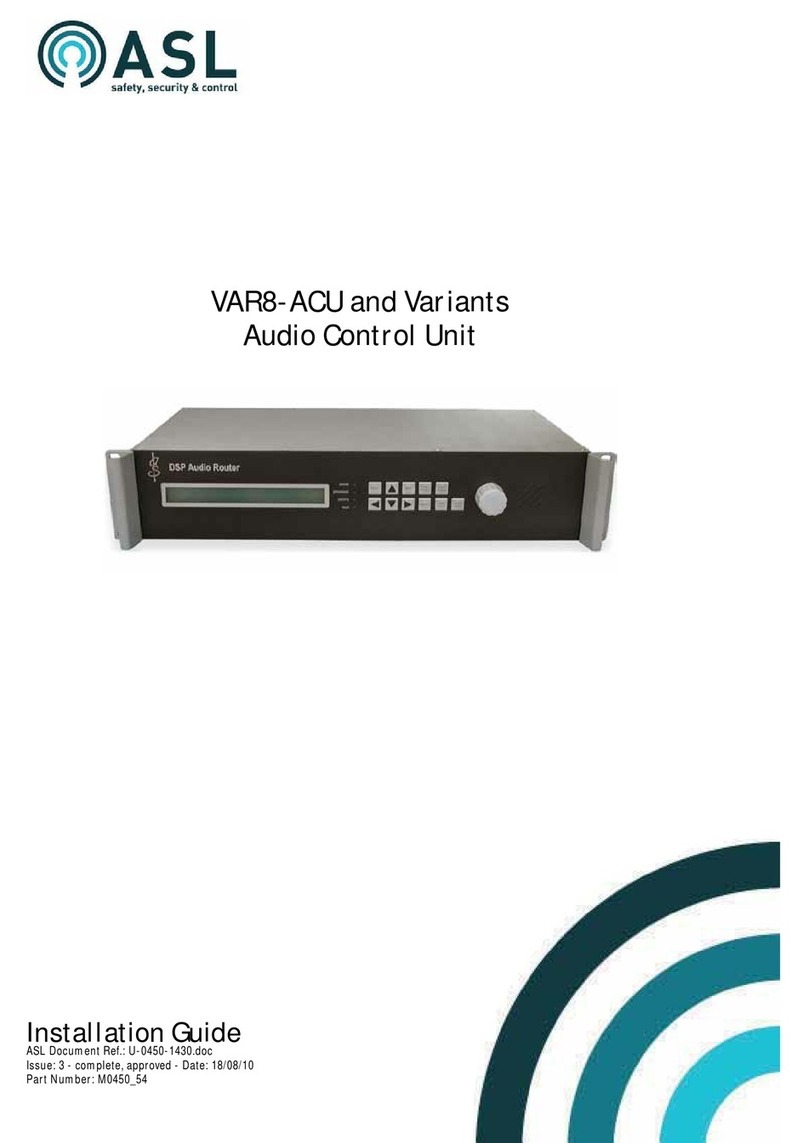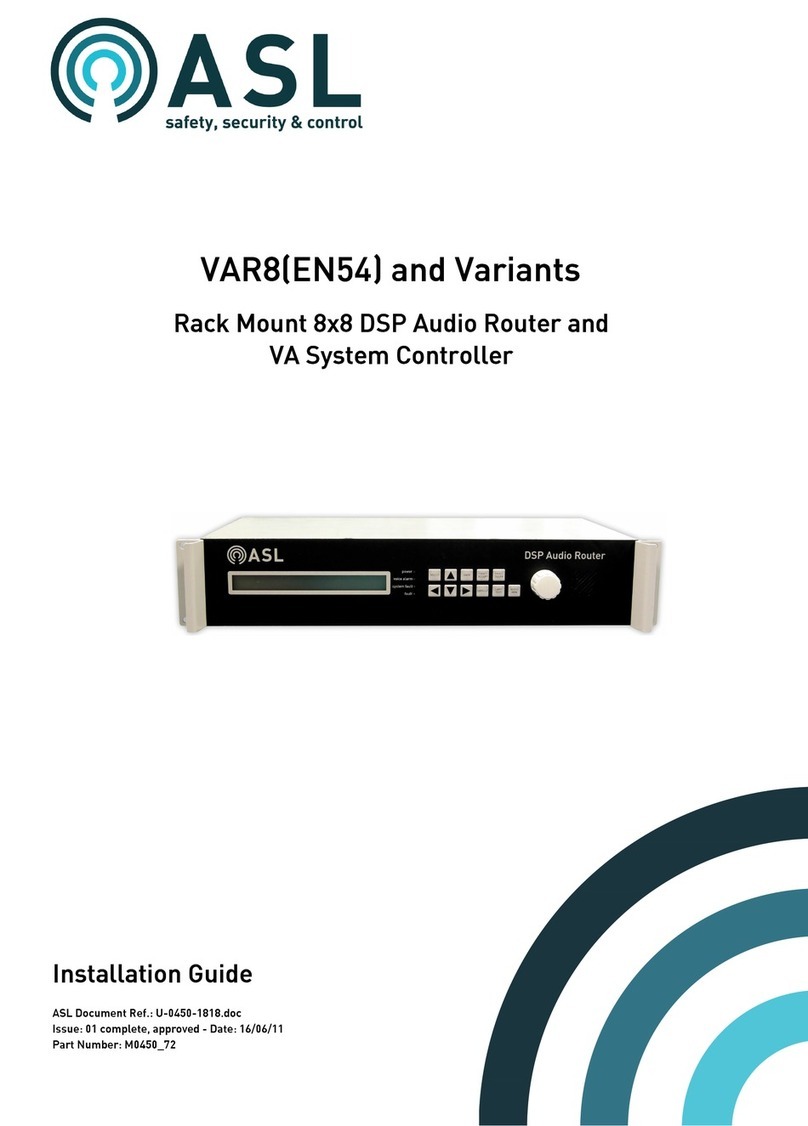VAR4 / VAR12 / VAR20 - Operation Manual
Is
Page 4 of 308
sue: 03 complete, approved
5.8 Remote Fault Output Configuration.......................................................................................... 44
5.9 Host Protocol Configuration...................................................................................................... 46
5.9.1 Routing Timeout Configuration ......................................................................................... 46
5.9.2 Fault Timeout Configuration ............................................................................................. 47
5.9.3 Make Route Message Format Configuration.................................................................... 47
5.9.4 Password Control Configuration ....................................................................................... 48
5.10 Configuration Data.................................................................................................................... 50
5.10.1 Configuration Data View ................................................................................................... 50
5.10.2 Clearing Configuration Data and Restoring to Default Settings ....................................... 50
5.11 VAR Router Software Versions ................................................................................................ 51
6ASL Amplifier Mainframe Commissioning .......................................................................................... 52
6.1 Detecting Frames Using ‘Learn’ Mode ..................................................................................... 52
6.2 Viewing Configured Mainframes .............................................................................................. 54
6.2.1 Verbose View....................................................................................................................54
6.2.2 Terse View ........................................................................................................................ 55
6.3 Mainframe Commissioning ....................................................................................................... 56
6.3.1 Viewing a Mainframe Configuration.................................................................................. 56
6.3.2 Editing/Viewing a Mainframe Description ......................................................................... 57
6.3.3 Configuring a Mainframe Temperature Alarm .................................................................. 58
6.3.4 Commissioning an Amplifier Slot ...................................................................................... 59
6.3.4.1 Editing/Viewing an Amplifier Slot Description ........................................................... 59
6.3.4.2 Configuring an Amplifier’s Internal Audio Path AC Surveillance............................... 60
6.3.4.2.1 Configuring an Amplifier’s AC Surveillance Tone Frequency Range................ 60
6.3.4.2.2 Configuring an Amplifier’s AC Surveillance Thresholds.................................... 62
6.3.4.2.3 Configuring an Amplifier’s AC Surveillance Interval.......................................... 64
6.3.4.3 Configuring an Loudspeaker Line DC Surveillance .................................................. 65
6.3.4.4 Configuring an Loudspeaker Line Earth Leakage Monitoring................................... 67
6.3.5 Mainframe Learn Check ................................................................................................... 68
7Mic/Line Input Configuration ................................................................................................................ 70
7.1 Mic/Line Input Type Configuration............................................................................................ 73
7.2 Parameters Common to All Mic/Line Input Types .................................................................... 75
7.2.1 Input Surveillance Tone Detection Configuration ............................................................. 75
7.2.2 Input Equalisation Configuration....................................................................................... 77
7.2.3 Input Fade Up and Down Time Configuration .................................................................. 79
7.2.4 Input Pre-announcement Chime Configuration ................................................................ 82
7.2.5 Input Gain and the Line Sensitivity Configuration............................................................. 84
7.2.6 Input Relative Gain Configuration..................................................................................... 86
7.2.7 Input Priority Configuration ............................................................................................... 88
7.2.8 Input Phantom Power Configuration................................................................................. 90
7.2.9 Input Emergency Class..................................................................................................... 91
7.2.10 Input Name Configuration................................................................................................. 93
7.2.11 Input Ambient Noise Sensor (ANS) Configuration............................................................ 94
7.2.12 Local Fallback Configuration ............................................................................................ 96
7.3 Paging Microphone and Zoned Fire Microphone Specifics...................................................... 98
7.3.1 PTT Button Configuration ................................................................................................. 98
7.3.2 PTT Button Cough Timeout Configuration ..................................................................... 100
7.3.3 Listen-in Configuration.................................................................................................... 102
7.3.4 Microphone Button Configuration ................................................................................... 105
7.3.4.1 Configuring a Button as Unused ............................................................................. 106
7.3.4.2 Configuring a Button for Microphone Routing (Zone Selection) ............................. 109
7.3.4.3 Configuring a Button for DVA Routing/Other Input Routing.................................... 112
7.3.4.3.1 Configuring the Route for a DVA Routing Button............................................ 115
7.3.4.3.2 Configuring a DVA Routing Button for Non-latching Mode ............................. 118
7.3.4.3.3 Configuring a DVA Routing Button for Latching Mode.................................... 120
7.3.4.3.4 Configuring a DVA Routing Button for Play Once Mode................................. 123
7.3.4.3.5 DVA Routing Button Busy Indication Configuration ........................................ 125
7.3.4.3.6 DVA Routing Button DVA Play Mode Configuration ....................................... 127
7.3.4.3.7 Clearing the Route Associated with a DVA Routing Button............................ 129
7.3.4.4 Configuring a Button as an All-Call Button.............................................................. 130































